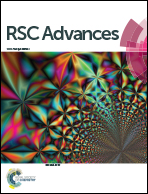Production of flavorful alcohols from woods and possible applications for wood brews and liquors†
Abstract
This work explores the utilization of wood for high-value production of novel alcoholic brews and liquors with natural flavors. The process capitalizes on our original wet-type bead milling (WBM) technology that enables direct enzymatic saccharification and alcohol fermentation of wood without chemical and heat treatment, resulting in the absence of toxic compounds. When alcohol-based products from various wood species, including Cryptomeria japonica (cedar), Cerasus × yedoensis (cherry), and Betula platyphylla (birch), were analyzed by SPME-GC-MS, different natural flavor components were found in each. Correlation analysis using Heracles NEO and ASTREE V5 showed that the alcohols from wood have different flavor and taste characteristics when compared with those of existing commercial liquors. From pilot-scale experiments, the yield of alcoholic brew per biomass amount was determined. Pilot-scale runs established the importance of optimum wood particle size during WBM for efficient alcohol production. Although the alcohol produced from wood must first be established as safe for human consumption, this is the first description of drinking alcohols produced from wood. This work may open up important avenues for the exploitation of wood resources toward food production to further advance the current state of forestry.



 Please wait while we load your content...
Please wait while we load your content...